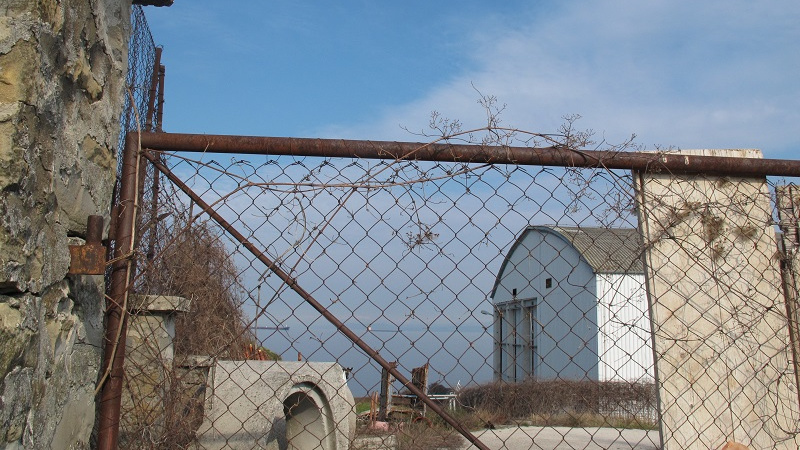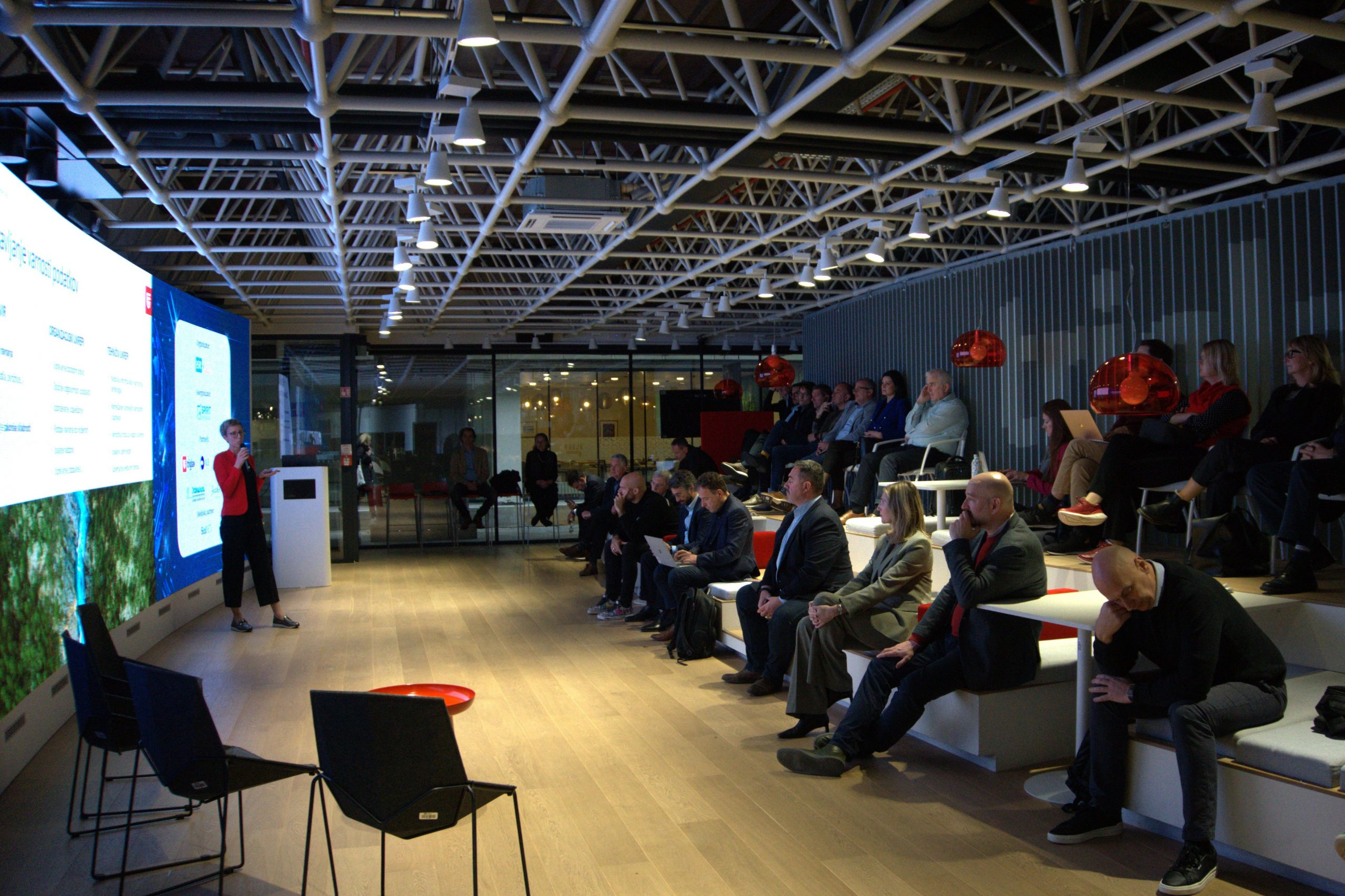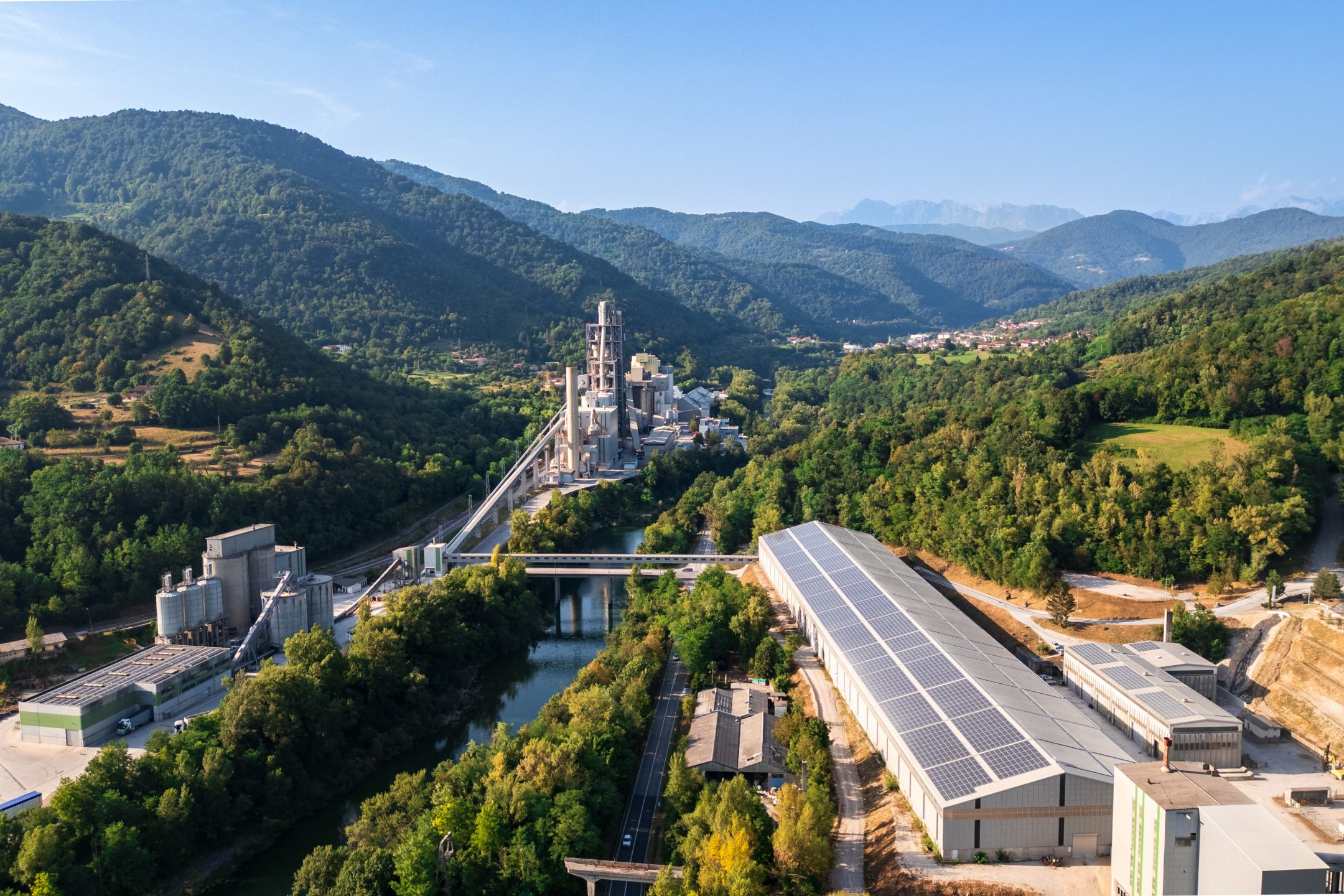Fish canneries in the Adriatic
A Peek Behind the Dust and Rust
Martin Pogačar, PhD
RESEARCH FELLOW, INSTITUTE OF CULTURE AND MEMORY STUDIES
In early spring 2018, a team of three researchers travelled to Lošinj, a popular tourist island in north-eastern Adriatic. The largest town, Mali Lošinj is also the largest Adriatic island town, historically famous for its shipwrights and shipyards and captains of the high seas. The port and the island boast a rich history stretching back to ancient Roman times while more recently it was also a popular resort for the Habsburg nobility of late 19th and early 20th centuries. Throughout the 20th century, the island and the town were a site of industrialisation and deindustrialisation, and lately the dominance of tourism.
The motives for our trip were quite specific: we were eager to find out more about the history and present of Adriatic fish canneries, coded in workers’ memories. We wanted to understand the broader implications of industrialisation and deindustrialisation as told through local stories along the Adriatic eastern coast. What were the consequences of fish canning industry in north-eastern Adriatic for society, economy, environment? How was this industry intertwined with global trends? How did working in a factory shape social life and the social world, which extended beyond the factory fences, into everyday life, entertainment, leisure, and how did this industry affect relationships between men and women?
A very brief history …
Fish canning as an industrial method originated in France where one Nicolas Appert won the concours in 1812 to provide Napoleon’s army with a solution to more easily and effectively preserve and transport food on their military endeavours. By mid-1820s the industry spread from France to England, to Portugal and Spain, to the USA, the Middle East and elsewhere. It was the beginning of the first global food production industry.
Primarily a military invention, or rather innovation of an older preservation techniques, canning opened up new possibilities also for general human mobility and longer energy-autonomy, as put in practice in extreme expeditions to the poles that spiked in the latter 19th century. Canning, booming in the time of rapid industrialisation, redefined, along with the railway, where and how far a human body might be able to travel. In fact, canning had such a profound symbolic and practical effect that the first recorded music was referred to as canned music, precisely because the record was seen to preserve sound in a similar vein as canning preserved food.
As such the history of canning lends insight into the wider histories and problematics of globalisation and industrialisation of the late 19th century. For example, in 1852 the British Navy commissioned an assortment of canned food for its men. The best offer came from Romania, where an Englishman established a canning factory. The product, however, as cheap as it might have been included undercooked, rotting offal and other unwanted bits of meat. No amount of bleach, reportedly, could help get rid of the stench. Most of the remaining cans were thrown into sea and some were given to the poor.
But this was also the time of development of science and technology, and it was Pasteur who was able to scientifically explain why was it that canned food could achieve longer shelf life: sterilisation eliminated microbes and altered proteins; conserved food in oxygen-free atmosphere could thus survive almost indefinitely. Scientific and technological development also brought new materials and new methods of production; over time, the difficult to open, tinned iron cans were replaced with aluminium ones; production units that initially were mostly manually operated were gradually automated; fire and coal powered sterilisation chambers were electrified, as were cooling houses which enabled a more consistent yearly distribution of the catch, hence also work. Regardless, the tin can remained a nutritional item for the rich and the poor, an object of health debates, design and branding, an essential nutrient on school trips for some, for others a staple in military service diet. Perhaps most extreme, the tin can also made it to space with first human extra-terrestrial travels.
... and its local iteration
North-eastern Adriatic coastal and island villages and towns were home to more than 60 canneries, the first two established by Karl Warhanek, a Habsburg businessman in Rijeka and Jelsa, Hvar island, in 1861. The development of the industry was also funded by the French and Italian capital and Europe-wide export trade. On a historical map of fish canneries names such as Izola, Rovinj, Banjole in Istria, or Jelsa, Vrboska, Komiža in Dalmacija crop up, sites with extensive fishing and fish-processing traditions that provided local expertise, labour power, and access to resources. The industry was dependent on the seasons and the movements of and fluctuations in fish populations. For example, in the latter 19th century, sardines, the most popular and famed canning species, nearly ran out in the Adriatic, forcing fishermen to cruise further south, towards Italy’s Sicily and Lampedusa. Entrepreneurial Hvar fishermen established fish processing plants on these coasts, salting fish and selling it across the Mediterranean. Some, such as Vice Novak from Hvar, even moved as far as Portugal to establish several factories, contributing to the exchange of expertise and capital (Gamulin in Zgodbe iz konzerve, 2020).
Today, only a handful of factories still operate while many have closed down, at various points over the late 20th century. Prime locations, often at the outskirts of old city centres were or will be sold for luxury hotels and tourist appartements, often leaving little else than a monument to mark the presence of the factory, that speaks little of the factory life: the on-site physician and child care, culture facilities, such as cinema were far from rare, integral part of work environment ( Petrović in Zgodbe iz konzerve, 2020).
Some factories, however, such as the Slovenian cannery Delamaris from Izola (named after the Second World War, when the border between Yugoslavia and Italy was settled, after the three factories that operated in Izola before the war, De Langlade, Ampelea, and Arigoni, and the first two letters of the Italian spelling of the town, Isola) was relocated from Izola to Pivka, while the Neptun cannery from Komiža, Vis island, was relocated to mainland Serbia (Petrović; Rogelja Daf in Janko Spreizer in Zgodbe iz konzerve, 2020). As much as the arrival of canning industry affected the look of towns and changed social relationships, particularly in terms of women emancipation and autonomy, so did its departure bring deindustrialisation and, in many cases, forgetting, supplanted by sanitised, idealised images from tourist ads.
Memories and stories
The factory in Mali Lošinj, named Kvarner riba, closed in 1974 and the building today is in a state of disrepair, and a hazard to visitors. It is barely kept alive by a group of artists who have studios on the ground floor, and cats who reign supreme on the first floor, among broken rusted tins, wooden crates, yellowy paper wraps. As we ascended the stairs we were enveloped in scents and pieces of time gone by that permeates cold stone walls, reflects off the broken glass and hovering particles of dust. But decay and melancholia only speak that much.
The former workers we had the chance to speak to told stories about factory work and shared with us snippets from their lives. The words fleshed out for us the getting up very early in the morning, the gutting of fish in the cold wintery water, the irregularities of nature of work, dependant on the season and daily catch; and, later on, distribution from the cooling houses. It was not difficult to imagine a boat speeding across the bay at the break of dawn, bringing workers to the factory, taking positions at the gutting tables, at the sterilisation boiler, or in the office keeping records of the amount of tins produced, the destinations to be shipped to. The factory shipped produce to the mainland for domestic market and the Yugoslav Army, but also to Austria, France and the USA, as could be deducted from the decaying paper wraps for cans, printed in various languages, promoting the quality Yugoslav product to foreign and domestic consumers.
The quest then brought us to the nearby island of Cres and the stories of the workers of the Plavica cannery, which closed in 1996. They emphasised the social aspect of work and the entanglement of work and everyday life. The narratives of the demanding working conditions were thus counterbalanced by fonder narratives of female workers about their work during the 1980s, about the satisfaction that they could go buy their own jeans and go to the disco.
Workplace constituted a place of sociality and community. Another important feature was the perception of change after the disintegration of Yugoslavia and the privatisation or denationalisation that followed in the aftermath of the country’s demise. The introduction of free market exposed the weak postsocialist economies, the power play of political and economic interests in which many interlocutors saw the reason for personal degradation and degradation of labour at large. The comparison of the memories of the situation before and after 1991, the year Yugoslavia disintegrated, clearly outlines a change in the social meaning of work that seems to have shifted from, declaratively and practically, workers as value to workers as cost. In a way, the stinky job made for quality spare time and was also a way to impart meaning on life.
Yet, older workers’ narratives from Vela Luka, Korčula island, reveal another layer to the story and add further complexity. After the war in 1945 the newly formed country of Yugoslavia found itself in a situation with most of the pre-war industry destroyed and with vast numbers of displaced and traumatised citizens. The aftermath of the war was a time of political consolidation of the new regime and a time of renovation and construction. In such conditions, the industry, including fish factories and others, was in dire need of labour power; they thus often illegally enlisted minors, especially women, some of whom started working at the age of fourteen or sooner, and therefore missed schooling, leaving them under-educated, often barely literate. On top of that, when they retired the ‘illegal years’ would not count in the number of working years and pension calculation. Still, for many female workers this was a way to achieve personal and financial independence and control over their life that was traditionally framed by patriarchal relations. As such, intimate labour histories are often still seen as a source of pride and personal realisation, and as a lens that puts the present into a different perspective (Borovičkić and Vene in Zgodbe iz konzerve, 2020).
Another look back
As we today try to understand the past and the fate of fish factories in the Adriatic, we can see that a rich history of labour and industry is almost forgotten, overridden by tourist success stories, real estate investment, and the general unease about what to do with industrial heritage. The successors to the socialist Yugoslavia systematically and consistently fail to understand the lost opportunities of cultivating industrial heritage. What is worse, they thus amplify the dissolution of historical knowledge about Yugoslav modernisation and industrialisation, which in contemporary interpretations of the past, inflected by the ideological and political and economic distancing of post-socialist states from their pasts, is simplified and sanitised. Such interpretations tend to misread the past as an ideological autarchic monolith and refuse to apply a more granular approach to understanding the often contradictory events and processes in the past where real people also lived, with hopes, aspirations, pride and pain. The mission that brought us to Lošinj and other places in the Adriatic, then, was not only an endeavour to save the memories of the forgotten workers and their industry, but also to provide insight and a more detailed understanding of how an industry, dependent on global politics and economies developed and subsided along the Adriatic coast.
This initial leg of the journey was concluded with an edited volume Stories from the can (Zgodbe iz konzerve, Zgodovine predelave in konzerviranja rib na severo-vzhodnem Jadranu, Založba ZRC 2020).
THE ADRIATIC
This is an article from Adriatic Journal Strategic Foresight 2021
If you want a copy, please contact us at info@adriaticjournal.com.


















